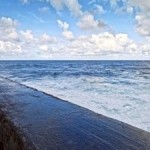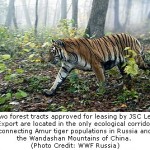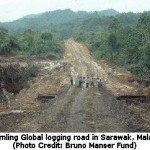
New York, N.Y. – A report released April 27 identifies 13 of the most vulnerable places in the Arctic Ocean that should be considered for protection as summer sea ice melts and industrial activity expands into newly accessible areas. The report, released by the Natural Resources Defense Council (NRDC) and the International Union for Conservation of Nature (IUCN), offers the first-ever Arctic-wide identification of areas most important to Arctic marine life and vulnerable to additional stress, on top of global warming, loss of sea ice and ocean acidification.
“The Arctic is the last ocean frontier,” said Lisa Speer, Director of the International Oceans Program at the NRDC. “We have a short window of opportunity to plan for industrial development in a way that respects and protects important and fragile ocean habitats, wildlife and communities. As nations around the Arctic plan new offshore oil development, fishing and shipping, this report jumpstarts the process of identifying areas that should be considered for protection from the environmental consequences of those activities, including oil spills, pollution, and habitat degradation.”
In the U.S., the Bering Strait, Chukchi Beaufort Coast in Alaska, and St. Lawrence Island made the list of 13 top priority areas. Also included are: Wrangel Island (off the Russian Federation), Beaufort Coast/Cape Bathurst (Canada), Polar Pack Refugium, Lancaster Sound/North Water Polynya, Disko Bay/Store Hellefiskebanke (off Canada and Greenland), White Sea/Barents Sea Coast, Pechora Sea/Kara Gate, Novaya Zemlya, High Arctic Islands and Shelf, and the Great Siberian Polynya (off Norway and the Russian Federation).
The areas identified in the report are particularly unique or rare, contain threatened, endangered or declining species and/or habitats, are especially vulnerable, fragile, sensitive, or slow to recover, or meet other internationally recognized criteria. They represent top priorities in a sub-set of 77 total Arctic areas that should be considered for protection.
The Arctic Ocean supports a unique array of polar-adapted wildlife – from polar bears to whales, seals, walruses and sea birds. Many of the four million people residing in the Arctic rely on these animals for nutritional and cultural sustenance.
As the Arctic warms, industrial activities such as shipping, fishing, and oil and gas exploration are expanding into ocean places that were previously inaccessible due to the year round presence of sea ice. This adds stress to a region already facing environmental pressures due to the impacts of climate change.
“There is increasing interest in expanded economic activities in the Arctic,” says Thomas L. Laughlin, Deputy Head of IUCN’s Global Marine and Polar Programme. “The information and maps we have available now will allow governments and the international community to make the right choices regarding the conservation and use of the natural resources of the Arctic.”
Also receiving an honorary mention in the report were the unique features of the High Seas of the Central Arctic Ocean, an area of international waters at the top of the world where marine life survives in an extreme environment of cold and darkness – outside of any country’s jurisdiction. Globally unique, the high seas of the Central Arctic may be exceedingly vulnerable and slow to recover.
The report reflects the findings of leading scientists and representatives of indigenous communities in Arctic countries who gathered at a Scripps Institution of Oceanography workshop last fall.
Check the following link to read/download the Full Report:
http://docs.nrdc.org/oceans/files/oce_11042501a.pdf
Notes:
At the Scripps Meeting last fall, experts identified a total of 77 sensitive Arctic places as ‘Ecologically and Biologically Significant Areas’. The meeting was convened by ICUN and NRDC, together with the Center for Marine Biodiversity and Conservation (CMBC) of the Scripps Intuitions of Oceanography, University of California. The project benefits from the support of the Albert II of Monaco Foundation.

About NRDC
The Natural Resources Defense Council (NRDC) is an international non-profit environmental organization with more than 1.3 million members and online activists. Since 1970, our lawyers, scientists, and other environmental specialists have worked to protect the world’s natural resources, public health, and the environment. NRDC has offices in New York City, Washington, D.C., Los Angeles, San Francisco, Chicago, Livingston, Montana, and Beijing. For more information, visit www.nrdc.org.
About IUCN
IUCN, International Union for Conservation of Nature, helps the world find pragmatic solutions to our most pressing environment and development challenges. IUCN works on biodiversity, climate change, energy, human livelihoods and greening the world economy by supporting scientific research, managing field projects all over the world, and bringing governments, NGOs, the UN and companies together to develop policy, laws and best practice. For more information, visit www.iucn.org.
Source: NRDC.














